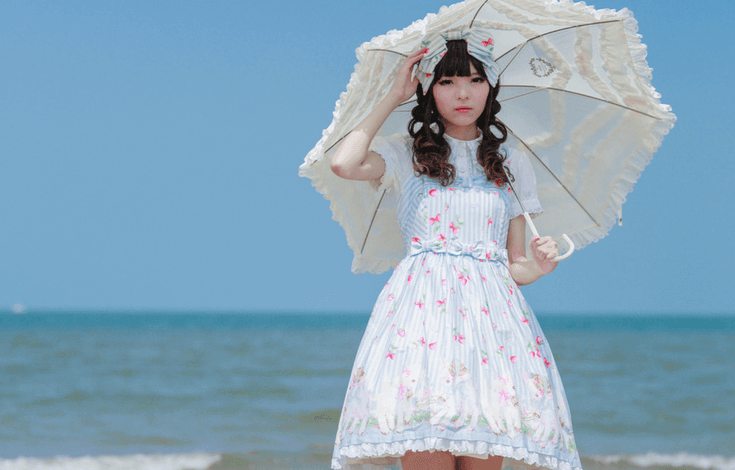Lolita Fashion: A Unique Blend of Elegance, Creativity, and Self-Expression

Introduction to Lolita Fashion
Lolita fashion is not just a style of clothing—it is a cultural phenomenon that blends creativity, elegance, and individuality. Originating from Japan in the 1980s, this fashion subculture has captured the attention of enthusiasts across the globe. At first glance, Lolita fashion is striking because of its Victorian-inspired dresses, lace details, frills, and layers of petticoats. However, beyond the aesthetics, it is a lifestyle choice for many who embrace it as a form of self-expression and resistance to mainstream trends.
What sets Lolita fashion apart is its boldness in celebrating femininity and modesty in a society where fast fashion often pushes minimalism or revealing clothing. Instead, Lolita fashion embraces volume, detail, and craftsmanship. For many wearers, it provides a sense of escape into a more romantic, whimsical world where they can embody a persona of grace and confidence.
The philosophy behind this fashion is also deeply rooted in individuality. While outsiders may see it as “costume-like,” to wearers it is a declaration of identity. Lolita fashion demonstrates that clothing does not have to conform to societal norms—it can instead become a creative platform for those who are passionate about elegance, history, and self-empowerment.
The Origins and Evolution of Lolita Fashion

The beginnings of Lolita fashion can be traced back to the Japanese street fashion scene in the late 1970s and early 1980s. During this period, young people in Tokyo’s Harajuku district began experimenting with Western Victorian and Rococo influences. They reimagined these historical looks into modern, wearable outfits that combined antique charm with playful elements.
By the 1990s, the style had grown into a recognized subculture, supported by influential Japanese brands like Baby, The Stars Shine Bright and Angelic Pretty. These labels solidified the look with their high-quality, ornate dresses and accessories. What once started as a niche interest quickly spread, thanks to Japanese fashion magazines and the international popularity of Harajuku street style.
Over the decades, Lolita fashion evolved into several substyles—Sweet Lolita, Gothic Lolita, Classic Lolita, and more. Each substyle brought a new interpretation of the look, from dark, dramatic ensembles to pastel-colored, doll-like outfits. The evolution of Lolita fashion showcases how adaptable and resilient the style has been, continuing to inspire new generations of enthusiasts worldwide.
Key Characteristics of Lolita Fashion
At the heart of Lolita fashion lies a set of core design elements that make it instantly recognizable. The silhouette is one of the most important features—voluminous skirts supported by petticoats or hoop skirts create a bell-shaped structure. This shape gives the clothing its iconic doll-like appearance, which is both elegant and youthful.
Equally important are the details. Lace trims, bows, ruffles, ribbons, and intricate prints are hallmarks of the style. These embellishments are not excessive for the sake of extravagance, but rather serve to emphasize femininity and artistry. Fabrics used in Lolita fashion are typically of high quality, ranging from cotton and velvet to chiffon, ensuring both comfort and sophistication.
Accessories also play a significant role. From knee-high socks and bonnets to parasols and ornate handbags, the right accessories complete the outfit. Shoes are often Mary Janes, platform heels, or boots that align with the chosen substyle. Together, these elements create a cohesive and unmistakable aesthetic that sets Lolita fashion apart from mainstream trends.
The Philosophy and Lifestyle Behind Lolita Fashion
While Lolita fashion is visually stunning, it also embodies a deeper philosophy that resonates with its followers. Many enthusiasts view it as a form of rebellion against modern beauty standards and the consumer-driven fashion industry. Instead of following seasonal trends, Lolita fashion thrives on timeless elegance and individuality.
Wearing Lolita often gives people a sense of empowerment. It allows them to control their narrative and how they are perceived, rather than conforming to societal expectations. The modesty of the style also challenges the idea that fashion must be revealing to be beautiful. In this way, Lolita fashion fosters confidence in those who wear it.
Moreover, for some, Lolita becomes more than just clothing—it becomes a lifestyle. Communities of enthusiasts gather both online and offline to celebrate the fashion through tea parties, meetups, and conventions. These gatherings are not only about showcasing outfits but also about building friendships and fostering creativity. This sense of community has allowed the fashion to thrive across cultures and languages.
Substyles of Lolita Fashion
One of the most fascinating aspects of Lolita fashion is its variety of substyles, each offering a unique interpretation of the core look.
Sweet Lolita is perhaps the most recognizable substyle, characterized by pastel colors, whimsical prints, and accessories reminiscent of childhood innocence. It often features motifs like candy, toys, and fairy tales.
Gothic Lolita, on the other hand, embraces darker tones such as black, deep red, and navy. It draws inspiration from Gothic architecture, religious imagery, and Victorian mourning attire, creating a more dramatic and mysterious aesthetic.
Classic Lolita strikes a balance between the two, leaning toward elegance and sophistication. It uses muted tones, floral prints, and refined accessories, making it appear more mature and timeless.
Beyond these, there are niche substyles like Punk Lolita, Hime Lolita (princess-inspired), and even Sailor Lolita. This wide spectrum of styles ensures that there is something for everyone, no matter their personal taste or preference.
Global Influence and Community
Although Lolita fashion started in Japan, it has since spread across the world, inspiring communities in Europe, North America, and beyond. International enthusiasts often gather through social media platforms to share outfit coordinates, styling tips, and brand recommendations. The internet has made it possible for the subculture to thrive even in places where it is less visible in public.
Lolita conventions and events have also gained traction globally. These gatherings often feature fashion shows, workshops, and marketplaces where brands and independent designers showcase their creations. For many attendees, these events are not just about fashion—they are about connecting with like-minded individuals who share the same passion.
Interestingly, the global spread of Lolita fashion has also led to cultural adaptations. While the Japanese roots remain central, wearers from different countries often incorporate their cultural heritage into the style, giving it new life and relevance. This adaptability is one reason why Lolita continues to flourish on an international scale.
Misconceptions and Challenges
Despite its charm, Lolita fashion has often been misunderstood. A common misconception is that it is related to the novel “Lolita” by Vladimir Nabokov. In reality, the fashion has no connection to the book and is not intended to be provocative. Instead, it is centered around elegance, modesty, and creativity.
Another challenge is the stigma that comes with standing out. Because Lolita outfits are elaborate and eye-catching, wearers often face unwanted attention or judgment. This can make it difficult for some to wear the style in public, despite their passion for it.
Cost can also be a barrier. Authentic Lolita clothing is often expensive due to its high-quality materials and craftsmanship. However, many enthusiasts turn to secondhand markets or independent seamstresses to make the fashion more accessible.
The Lasting Appeal of Lolita Fashion
The continued popularity of Lolita fashion lies in its timeless appeal. It offers a unique space for creativity, individuality, and community that mainstream fashion rarely provides. For those who wear it, Lolita is not simply about looking pretty—it is about feeling empowered, expressing artistry, and connecting with others who share the same appreciation for elegance.
As the fashion continues to evolve, it remains a testament to the idea that clothing can transcend mere functionality. Lolita fashion proves that style can be a form of personal storytelling, one that allows individuals to step into a world of grace, imagination, and confidence.
Conclusion
Lolita fashion is far more than an eye-catching trend—it is a subculture with roots in history, art, and individuality. From its Victorian-inspired silhouettes to its philosophy of empowerment and creativity, it continues to inspire people worldwide. Despite misconceptions and challenges, the community surrounding Lolita fashion remains strong, ensuring its place as a lasting movement in the world of alternative fashion.
For anyone curious about fashion that goes beyond the ordinary, Lolita offers a world of elegance and self-expression that is as beautiful as it is empowering.



